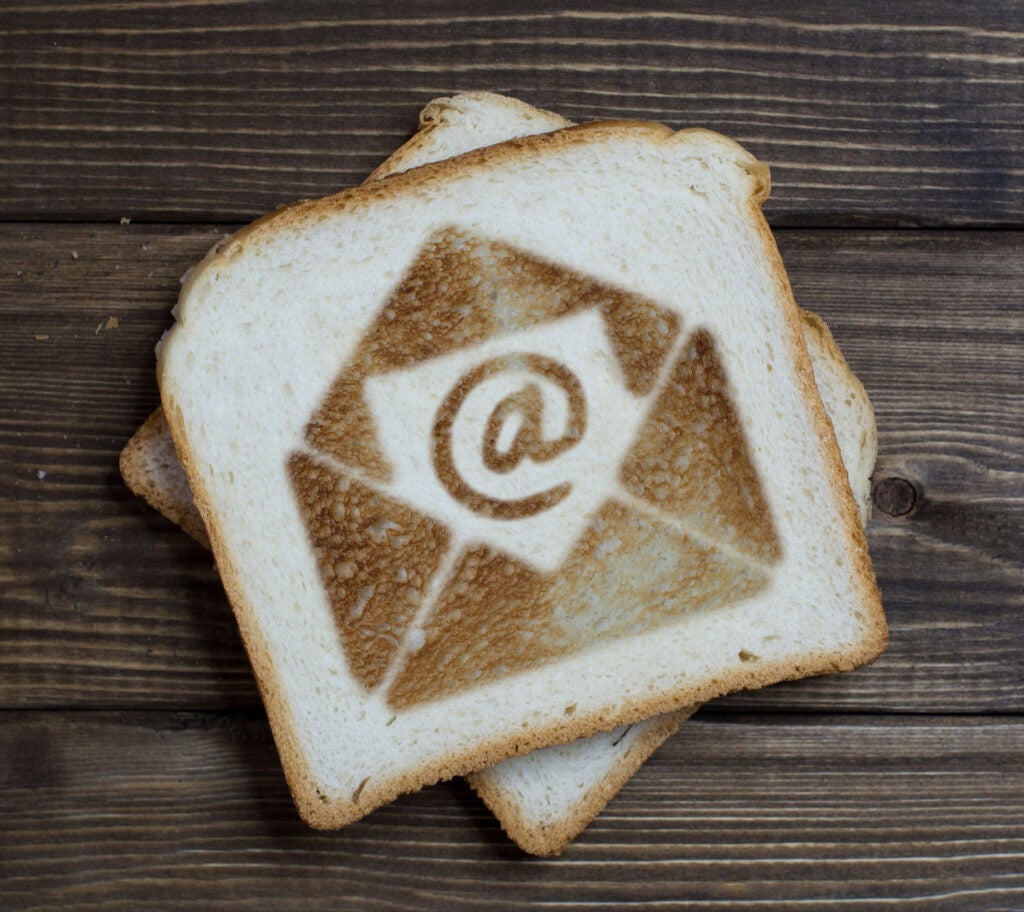The gradual disappearance of third-party cookies and mobile identifiers has given new life to ecommerce brands’ email marketing methods.
Previously, direct-to-consumer (DTC) brands scouted for potential customers on social media, where site pixels, cookies and mobile device IDs facilitated practically endless custom audiences. But now, DTC brands are doubling down on direct outreach via email and working with partners to extend their reach beyond their own newsletters.
Take Wildgrain, a subscription box company for bread and pasta, which built its business on Facebook. Due to declining paid social traffic, Wildgrain has ramped up its email marketing efforts through a partnership with LiveIntent.
Since it started working with LiveIntent in mid-2022, Wildgrain has seen 14% lower customer acquisition cost (CAC) and 13% higher reach compared to Facebook’s numbers alone. Those results have allowed the company to be less reliant on social media for acquiring new customers, said growth marketing lead Rose Hopkins.
Social signal loss
“Everything we do has to come back to our monthly CAC targets,” Hopkins said.
Due to its relatively low CAC, Facebook has been Wildgrain’s top-performing channel since it started advertising on the platform in 2020, she said.
At the time, Wildgrain was still a regional brand looking to acquire customers in New England and California. And Facebook stood out for how easy it was to geotarget in those markets, according to Hopkins.
However, within the last two years, Facebook marketing has become less focused on data-driven audience building and more focused on creative optimization, she said. “Matching your audience to their audience has just gotten trickier.”
That shift was likely caused by the rollout of Apple’s Intelligent Tracking Prevention in 2020, which disabled third-party cookies by default in Safari browsers. And the release of iOS 14.5 in 2021, which introduced the AppTrackingTransparency feature that requires users to give permission for mobile apps to track their behavior, also had a detrimental effect on Facebook targeting.
The signal loss will only worsen as Google moves forward with its plan to remove third-party cookies from Chrome.
But it’s hard for a smaller DTC brand to prove the direct impact these platform changes have on its marketing efforts, Hopkins said. Analyzing data that breaks down attribution by platform is a heavy lift for small brands’ data teams.
Instead, Wildgrain focuses solely on measuring CAC at a channel level – evaluating Facebook performance as one channel, for example, rather than digging into differences in iOS vs. Android performance.
“No matter what level of detail you dig down to, you’re never going to find consistency between all the different ways you could look at the data,” Hopkins said. “So we’re just trying to make sure that, directionally, things are going the way we want them to [at the channel level].”
High-intent, low CAC
As marketing on Facebook got harder, Wildgrain looked for ways to boost the efficiency of its email outreach, which was another high-performing channel.
This led to a partnership with LiveIntent, which resells ad placements across a wide network of publisher newsletters.
Through LiveIntent, Wildgrain was able to place ads for its service in newsletters run by publishers it would not have had access to otherwise – at least without spending more money than it was comfortable with, Hopkins said. These pubs include The New York Times, Dotdash Meredith’s Better Homes & Gardens and Food & Wine, and Condé Nast’s Bon Appétit.
The suggestion to use LiveIntent actually came from another New England-based DTC company, BookBub, which operates a newsletter for ebook recommendations, Hopkins said.
As it turns out, there’s a tight-knit community of New England-based DTC brands that swap ideas. Hopkins previously worked at BookBub and saw how effective its email efforts had become at reaching middle-aged and older women, which also happens to be Wildgrain’s key target audience.
Newsletter audiences tend to be more engaged and have higher purchase intent compared to audiences that are scrolling through social feeds to alleviate boredom, Hopkins said. And higher purchase intent means lower CAC.
Plus, Wildgrain can use its first-party audience data to build lookalike audiences for its customer acquisition campaigns while suppressing existing subscribers.
Looking at the 30-day window prior to when she spoke to AdExchanger, Hopkins reported a 9% overlap between Wildgrain’s target audiences on LiveIntent and Facebook. Across all Wildgrain’s marketing channels for the same period, Hopkins said 60% of LiveIntent’s audience could only be reached via email marketing.
Going forward, Wildgrain plans to explore other email-based ad inventory, Hopkins said, including native placements and sponsored newsletters. “The success here has definitely helped us justify more tests.”



















